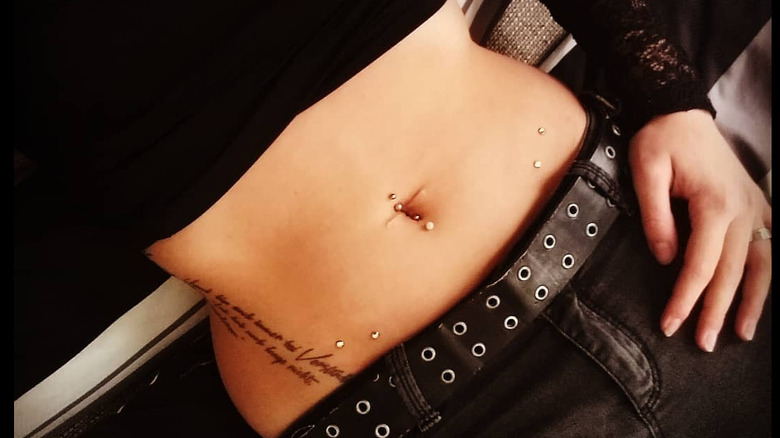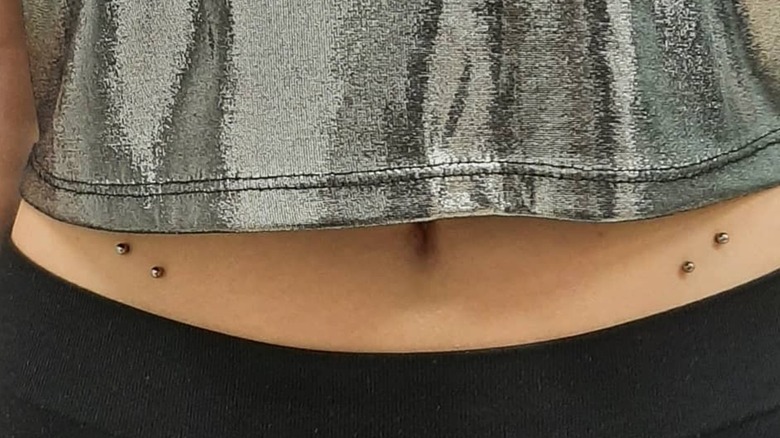Everything You Need To Know Before Getting A Hip Piercing
You can pierce practically any part of your body these days, but that doesn't necessarily mean they'll all be equal in maintenance or pain. For example, an industrial piercing might hurt less than a bridge piercing, or vice versa. This is pretty subjective to each person. One piercing you may not have thought about before is the hip piercing, which is growing increasingly popular, so we're here to give you the full scoop on what you need to know about it.
You should first know that there are two different kinds of hip piercings — the surface hip piercing and the dermal hip piercing. According to Healthline, the difference is all in their names. The surface hip piercing sees the bar going in one side of your skin and coming out on the other. In other words, you can visibly see both sides of the bar. A dermal hip piercing, on the other hand, only shows one side of the piercing, as it's punctured into the skin. If we think of the surface piercings as horizontal to your skin, the dermal piercings are vertical, going directly into your body.
This is how much hip piercings cost in comparison to other piercings
Hip piercings aren't too much more expensive than other piercings. According to Byrdie, they typically cost about $50 to $60, though they can cost as much as $100, and they're located directly next to your hip bone, hence their name. One key distinction that separates hip piercings from other piercings is their healing times. Dermal piercings can take six months to heal, while surface hip piercings can take eight to 12 months to heal (via Byrdie). However, your cleaning process remains the same as for other piercings. They should be cleaned twice a day with a sterile saline solution, just as you would clean an ear piercing, and you should avoid letting it snag on anything or soak too long in anything, even the bath.
A few side effects you can experience when getting hip piercings include your body rejecting the piercing, your piercing becoming infected, and your body scarring at the piercing site (via Byrdie). However, don't let these scare you; these are the same risks other piercings present. You'll know your piercing is infected if it starts draining colored fluid, especially yellow, and you'll most likely want to see a doctor if that happens. Unfortunately, rejection is more difficult to deal with. If your body begins to reject the piercing, which happens most with dermal piercings, there is nothing you can do. You should seek a professional to remove the piercing before your body pushes it out itself.
Overall, hip piercings aren't too different from others. You just mostly need to know the two different variations, but most importantly, just have fun with your body!

